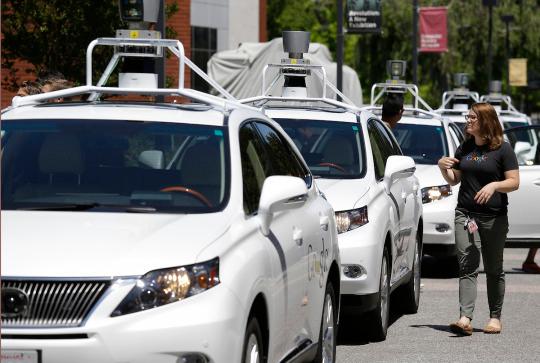
If
you’ve been paying attention to the buzz surrounding autonomous and
self-driving vehicles over the past couple years, you’ve likely heard
the arguments about whether they might one day take the wheel from us.
While enthusiasts wring their hands over losing control, and others
worry about security and privacy, advocates tout the potentially huge
advantages of a fleet of vehicles which almost never crash.
A 2012 study
by KPMG and the Center for Automotive Research (CAR) predicts that a
self-driving fleet could eliminate 93 percent of crashes attributed to
human error. The savings in lives, injuries, insurance claims, delays,
lost productivity and more would be substantial (so much so that a few
prognosticators have imagined a world where non self-driving cars would be banned in the name of public safety.)
But
if the technologists, business-government interests, and early adopters
pushing for autonomous driving are right, there’s one thing that’s been
left out of the conversation: If cars and trucks don’t crash, what
happens to the millions of jobs supported by driving today?
Call it the crash economy — not just because of how it’s grown, but where it may be heading.
“That’s
an extremely good question,” David Alexander, a senior transportation
research analyst with Navigant Research, acknowledges.
“All
the studies popped out over the last couple of years have looked at the
huge potential savings of reduced accidents, productivity improvements.
But there is another set of consequences waiting for us depending on
how [autonomous vehicles] roll out.”
While
the first true self-driving vehicles are expected before the end of the
decade, most experts agree a fleet won’t be a reality for 20 years. But
given that advocates expect AVs to be shared far more than cars today,
fewer vehicles and their associated infrastructure will be needed. CAR’s
David Wallace said the Center may soon have a study on the potential
downsides; though he’s more optimistic, Wallace cites a recent study by
Barclays analyst Brian Johnson, which forecast a 40 percent drop in
new-vehicle sales over the next 25 years.
The
potential decline in new car sales has been discussed but a Texas car
restorer by the name of Melvin Benzaquen recently reeled off some of the
other consequences of AVs in a blog post. If self-driving cars don’t
crash as much, demand for body shops declines. It’s easy to start
following that logic through many other lines of work:
Emergency services/equipment
Highway safety equipment
Towing/recovery services/equipment
Traffic enforcement services/equipment
Used vehicles
Compliance professionals/investigators
Court system infrastructure/processing
Lawyers/legal services
Insurers/insurance
Construction
Highway safety equipment
Towing/recovery services/equipment
Traffic enforcement services/equipment
Used vehicles
Compliance professionals/investigators
Court system infrastructure/processing
Lawyers/legal services
Insurers/insurance
Construction
Auto
manufacturing – one of the last bastions of organized labor – would
contract (Johnson, at Barclays, estimates GM and Ford would need to cut
North American output up to 68 percent). Autonomy also implies less
demand for professional drivers. The potential decline in employment
suggests diminished income tax revenue as well as sales tax revenue,
traffic enforcement and vehicle registration revenues among others.
A
fall in auto ecosystem demand also has second-order impacts. We may
need fewer commodities like steel, aluminum, precious metals, oil,
chemicals. The federal, state and municipal bureaucracies that exist to
serve the automobile would also likely get smaller.




No comments :
Post a Comment